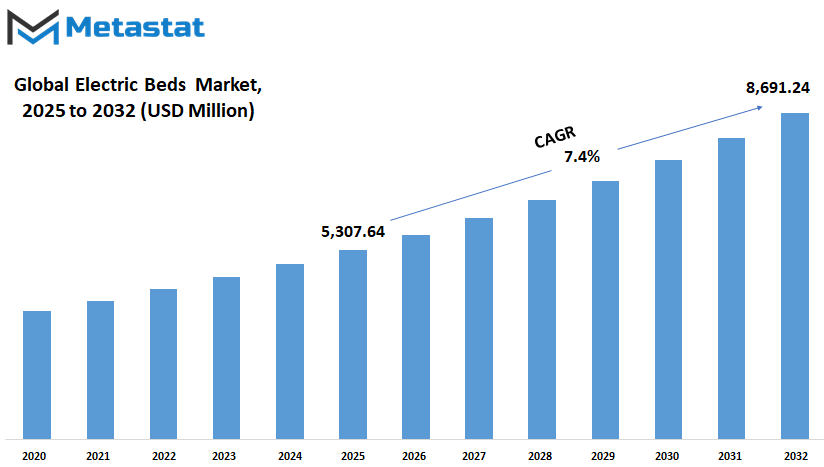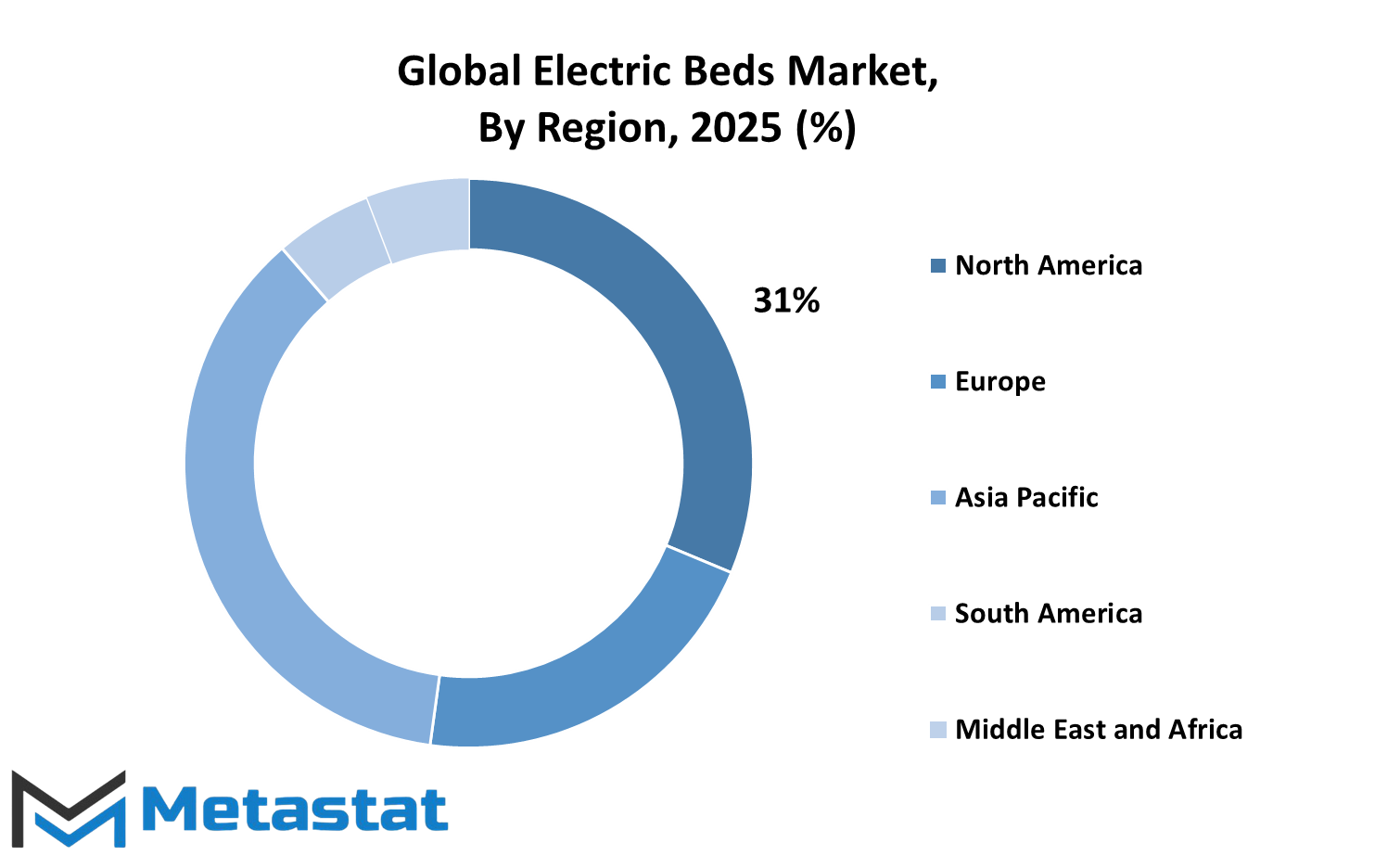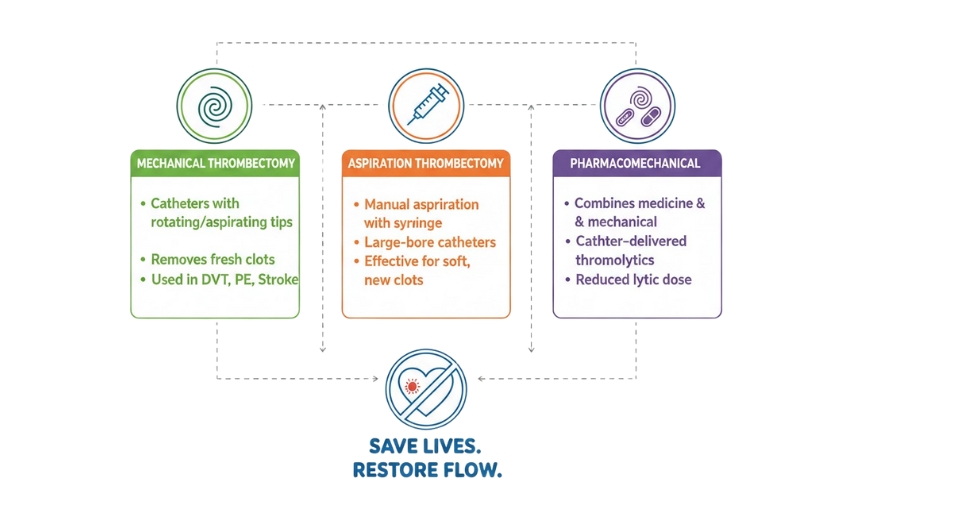MARKET OVERVIEW
The Global Electric Beds market represents one niche in the healthcare and medical equipment market, focusing on beds with height, head, and foot adjustments that are controlled using electric motors. The primary markets for electric beds are in hospital, nursing home, and home settings in which patient comfort and mobility are crucial. Thus, this product represents a superior type than the conventional manual bed and allows inclusion of added options that help in better patient care, safety, and caregiver efficiency.
The further advancements in the healthcare sector are going to add to the size of the Global Electric Beds market, embracing more innovations that are going to ensure better patient outcome and easier care. Electric beds will be a smart technology-enabled bed where patients can be remotely monitored, and adjustments can automatically be made for individual needs. These will soon be widely adopted by hospitals and care facilities as a means to ensure operational efficiency and patient satisfaction.
The scope of the Global Electric Beds market is not limited to traditional healthcare settings. Home care is a rapidly developing area of the business; the aging population and the desire for in-home treatment are among the drivers. Electric beds designed more for residential use will become more common; the product will need to balance clinical functionality with aesthetic considerations to suit home settings. This category will accommodate most patients recovering from surgeries, others suffering from chronic diseases, as well as geriatric patients with higher independence and comfort.
The Global Electric Beds market will also diversify in terms of product offerings, including beds with advanced features such as programmable positions, integrated scales, and pressure relief systems to prevent bedsores. Pediatric and bariatric electric beds will continue to grow with demand for their use in caring for different types of patients. There will be a growing need for customization and modularity of designs that allow for easy upgradability to meet the change in healthcare requirements.
Technological advancement would be the main force driving the future of the Global Electric Beds market. Integration with Internet of Things (IoT) devices will enable real-time collection and analysis of data, thus better care for patients and management. Features like voice control, connectivity through a mobile app, and automated changes in position through biometric feedback are the norm in most electric bed models.
Geographically, the Global Electric Beds market will be diffused in adoption due to regional differences in healthcare infrastructures, economic conditions, and changes in demographics. Developed regions with well-established healthcare systems will experience the highest level of adoption in the market, while emerging economies will slowly build up their market share with time as they invest in improving healthcare facilities and upgrading the quality of patient care.
Regulatory frameworks in terms of quality standards will also determine the landscape of Global Electric Beds Market. Strict safety and performance regulations would demand from the manufacturers; thus, products would be highly reliable with safety ensured for the patients. Requirements of certification and international standards compliance would be important factors for entering the market and competing.
The Global Electric Beds market, therefore, shall continue to expand, led by technological innovation, demographic shifts, and a growth in the need for improved solutions for patient care. Its extension into home health care, its diversification into new products, and integration into smart technologies would determine its further development, rendering it an indispensable part of the overall healthcare equipment industry.
Global Electric Beds market is estimated to reach $8,691.24 Million by 2032; growing at a CAGR of 7.4% from 2025 to 2032.

GROWTH FACTORS
The Global Electric Beds market has enormous growth potential over the coming years. These beds are becoming more sought after in hospitals, nursing homes, and rehabilitation centers as a requirement for comfort and convenience in healthcare facilities. They are far more functional than other conventional beds, offering positions that can easily be varied for the patient, easy height adjustable, and high mobility functionality. The growing need for specialized care and comfort in these settings is fueling the demand for electric beds, and this trend will continue to grow as healthcare systems expand globally.
Another major growth driver is the rising awareness and adoption of smart home technologies. With the increasing focus on home automation, more people are looking to upgrade their living spaces with intelligent, user-friendly furniture. Consumers seem to be attractive to electric beds that come with remote controls, sleep tracking features, and even their own built-in massagers. The capacity to personalize sleep positions to diminish back pains, improve blood circulation, and enhance overall sleep quality sets electric beds further and more attractively towards the consumers’ choice.
Another reason for growth in the market is the growing aging population globally. As more people live longer, the market for products targeting special health needs increases. Electric beds become a key part of old-age care because they enable flexible settings that make it easier for the elderly to get out and into bed safely. Due to the availability for people having one or multiple ailments like arthritis and joint disease issues, such arrangements are generally most favored residential aged care service offerings.
However, there are a few factors that may adversely affect the growth of the Global Electric Beds market. High initial costs of electric beds may act as a barrier for some customers, especially in low-income areas. Moreover, the complexity in installation and maintenance may deter some potential buyers from opting for electric beds, especially in countries with undeveloped healthcare infrastructure.
Despite these challenges, significant growth opportunities exist in emerging markets. As disposable incomes are growing and standards of healthcare are improving, the demand for electric beds in these regions is likely to increase. Additionally, new technological advancements in electric beds like durability, ease of use, and efficiency in energy consumption would provide even more lucrative opportunities to the market in the years to come. The future of the Global Electric Beds market is bright, sustained by innovation and continuous demand for comfort coupled with specialized health care.
MARKET SEGMENTATION
By Product Type
The Global Electric Beds market is witnessing high growth, as the demand for comfort, convenience, and medical benefits is on the rise. Looking ahead, this market will continue to grow further with technological advancements, growing healthcare needs, and changes in lifestyle. Electric beds are often used in hospitals and home care settings. These beds offer a more functional form of functionality that goes beyond basic bed frames. These beds can be set in different positions for comfort, enhance mobility, and provide easier care for patients. The market is segmented into two major product types: Semi-Electric Beds and Fully Electric Beds.
Semi-electric beds are used by the patient to adjust the head and foot of the bed with electric controls. The other adjustments, like height, are made manually. Such beds are popularly preferred when the factor is one of saving costs, while adjustment flexibility becomes necessary. The Fully Electric beds have all functions electrically adjustable. They allow maximum comfort and convenience, in which a press of a button makes the entire bed’s height, head and foot adjustments within one’s command. Fully electric beds are becoming increasingly popular in hospitals, nursing homes, and even at home where the patient or the elderly requires continuous and hassle-free support. Demand for both electric beds types will continue to grow in the future years.
Medical equipment for the care of patients will increase in demand with an aging population of the world. Semi-electric beds will be popular, as they will be inexpensive, while fully electric ones will be in demand by consumers who look for the best comfort and functionality. In addition, the further development of both kinds of electric beds in terms of design and smart technologies will bring them greater efficiency and user-friendliness. Such features as remote control use, built-in monitoring systems, and customizable settings will give the end-users an even more personalized experience. These innovations will undoubtedly contribute to a growing interest in electric beds in both healthcare facilities and homes.
In a nutshell, the future of the Global Electric Beds market is bright, and the driving forces behind its growth include technological innovations, increased healthcare demands, and an increasingly aging population. Semi-electric as well as fully electric beds will continue to deliver against this demand requirement. As the market continues to evolve, functionality of products will improve while at the same time reducing its price. It will help the customers worldwide.
By Application
The Global Electric Beds market is under significant development. Various segments of the market are growing and can be observed across different applications. This market is mainly represented by beds, which have electric mechanisms for adjusting the position to make them comfortable and provide some medical benefits. The demand for electric beds will rise in the future due to the advancement of technology, population aging, and a growing concern about healthcare efficiency and comfort.
Electric beds have been made for various applications in the health industry, including hospitals, clinics, and nursing homes. In the global electric beds market, the general bed is one of the major categories that has wide utility as well as application. These beds are used for everyday comfort in both hospital and home settings, offering adjustments for sleeping positions, making them essential for patients who require prolonged care or those recovering from surgery. With a rising number of individuals seeking home healthcare solutions, the demand for general electric beds is set to rise. Another important segment is the Intensive Care Bed.
They are meant for seriously ill patients that need constant care and monitoring. They usually are equipped with facilities that provide maximum care, including the ability to be adjusted in various positions, as well as accommodating medical equipment that is sometimes necessary for life support. The healthcare systems are expected to continue prioritizing advanced care and critical care units, which will increase the demand for electric intensive care beds in the next few years. Another significant segment of the market is the Bariatric Bed, designed for people who are overweight or obese.
These beds have higher weight capacities and are made to ensure the comfort and safety of patients. With the increase in obesity globally, the bariatric electric bed market will see growth as healthcare providers focus on the provision of specific solutions to the population.
Birthing Beds are another significant part of the Global Electric Beds market. These are used for labor and delivery and come with various positions that facilitate the comfort of the mother as well as the health care professionals. As more people are delivering around the world, especially in emerging economies, there will be an increased demand for birthing electric beds.
Finally, the Others segment covers diversified specialized electric beds for particular conditions or for application in home care and rehabilitation centres. This area is also destined to increase, as providers of healthcare will evolve and fulfill all the requirements by the heterogeneous group of patients.
These categories, in the near future, will evolve and get integrated with new technologies. In addition to that, smart features, remote monitoring, and customized care will lead to a high demand for electric beds. Further, advancements in medicine and technology will increase the importance of electric beds in the care and comfort of patients.
By End-User
The Global Electric Beds market will boom in the near future. These are projected to increase demand across several health sectors, leading to its growing prospects in the future. Where more comfort and support through electronic adjustment is given to the patients, they can also be utilized in that manner, especially. The more and more adoption of electric beds by healthcare organizations to improve the patient outcome, reduce the burden on healthcare providers, and increase patient satisfaction has increased the demand for electric beds in the market. The more diverse types of healthcare organizations' needs are going to bring future requirements for electric beds, again determining their direction in the future.
Division according to end-users is one of the most significant parts of the Global Electric Beds market. The demand for electric beds is not homogeneously spread among all healthcare institutions. Instead, it varies with types of care involved and the necessities of patients. Hospitals and clinics are one of the greatest user categories in electric beds. In response to the increasing number of patients requiring advanced care, hospitals are upgrading their facilities to offer more efficient and comfortable treatment. Electric beds are very important in hospitals because they can easily change the position of patients, and most patients are often required to be repositioned frequently. They also play a crucial role in reducing pressure sores and improving comfort in general during long stays in bed.
Other major market segments would be reproductive care centers. This is because with the growing demands for maternity and gynecology services, centers will adopt more electric beds as a way to improve patient care. Electric beds in such a center add on comfort and support to the procedure and recovery. They also go a long way in improving efficiency in the overall care process which is critical for reproductive care service delivery.
Dentistry, though a smaller market, drives the demand for electric beds. In dental care, especially in surgical procedures, it is necessary to have adjustable beds that offer comfort and support for patients during treatments that require long hours of attention. The use of electric beds in dental clinics helps in making the patients' experience more comfortable while ensuring optimal positioning for dental professionals.
Going into the future, the others category, which includes rehabilitation centers, nursing homes, and home care settings, will also see significant growth in the demand for electric beds. As the aging population continues to rise globally, more elderly patients will require home care services or long-term care in these centers, further driving the market for electric beds.
The health care industry would transform, and Global Electric Beds would integrate the designs, functionalities, and features with innovations, thereby making it accessible and enhancing the utility of beds in all sorts of health care facilities globally.
|
Forecast Period |
2025-2032 |
|
Market Size in 2025 |
$5,307.64 million |
|
Market Size by 2032 |
$8,691.24 Million |
|
Growth Rate from 2024 to 2031 |
7.4% |
|
Base Year |
2024 |
|
Regions Covered |
North America, Europe, Asia-Pacific, South America, Middle East & Africa |
REGIONAL ANALYSIS
Growth in the global market is seen with regional dynamics playing an awesome role in this matter. The market of electric beds can be segmented into several key regions: North America, Europe, Asia-Pacific, South America, and the Middle East & Africa. Each of these regions has some unique opportunities and challenges that impact the overall development of the global electric beds market.
The high demand is the market driving force in North American electric beds. Such a factor owes to the matured population aged population in America, Canada, and Mexico electric beds will thus be convenient by being comfortable together with the relief that it portrays to the lifestyle of the senior people and peoples who cannot move their legs when walking. It will continue to show a growth curve as the hospitals and nursing homes, which have long been contributing significantly to healthcare sector growth in this region, keep investing heavily in advanced medical equipment to increase their patient care level.
Electric beds are equally a significant area in the Europe region. Its healthcare infrastructure has a developed structure that gives the UK, Germany, France, and Italy an edge in competition as these countries dominate respective markets. This region also is expected to drive demand for electric beds based on the growing preference for homecare solutions with the growing elderly population. Moreover, increased awareness of the advantages of electric beds, such as comfort for patients and less strain on caregivers, are expected to drive the growth of the market in Europe.
The Asia-Pacific market for electric beds is expected to grow rapidly with the rapid economic growth of countries such as China, Japan, and India. As these countries develop, there will be a rise in demand for healthcare services due to the need for affordable and effective homecare solutions. An increase in the elderly population in Asia-Pacific, especially in Japan and China, will help to fuel demand in the electric bed market. Moreover, advancements in healthcare technology and high investments in healthcare infrastructure in this region are also likely to fuel the electric bed market growth.
The South American market for electric beds is also growing steadily, especially in countries like Brazil and Argentina. With improvements in healthcare services and the aging of the population, demand for electric beds is expected to increase. However, this market faces economic instability and less access to health care in specific areas. Even so, with continued modernization of health systems, the market is likely to grow steadily.
Due to an augmented demand for advanced healthcare solutions, growth is observed in the Middle East & Africa. GCC nations, Egypt, and South Africa are the primary contributors to the growth of the electric beds market in this region. An upscale healthcare facility with better health care services by upgrading them has inspired demand for electric beds, and the investment made by governments leads towards such upliftment.
The global market for electric beds will continue to expand in all regions, forward-looking. It is likely that healthcare systems will improve and that the requirement for patient comfort and care will increase, and electric beds will be an inevitable part of healthcare facilities and homes worldwide.

COMPETITIVE PLAYERS
In the coming years, the global market for Electric Beds is supposed to grow massively as the healthcare solution demand would rise with further technological advancements. Along with other advanced medical needs, the old world population requires high-end innovation in medical devices such as beds, which should give a rise to the overall growth of this electric bed market. In electric beds, essential in hospitals and nursing homes but also in the home care context, patients gain improved comfort. This is important for better monitoring of medical activities and efficiency among caregivers. A variety of adjustments in position will be supported as these beds move with the support of electric motors, thus serving to support varied medical conditions.
There are quite a few major players in the competitive landscape of electric bed features, driving this industry forward with innovations and diversified product offerings. Hill-Rom Holdings, Inc., mainly in the business of medical equipment, is a name that has become synonymous with excellent electric beds and healthcare solutions. With innovation for the safety and comfort of the patient, Hill-Rom Holdings, Inc. has earned the trust of the healthcare service providers. Stryker Corporation is yet another leader specializing in developing high-tech medical equipment to improve care quality. Electric beds from Stryker Corporation are used in most hospitals globally, and these offer adjustable positions to help patients and caregivers as well.
Invacare Corporation is also another major player in the market that offers a range of home healthcare products, which include electric beds. The products of the company ensure comfort and safety, which is vital for patients with mobility impairments. Medline Industries, Inc., which specializes in healthcare products, is also making waves in the electrical bed line by offering solutions suitable for hospital and home care settings. Paramount Bed Holdings Co., Ltd. is a major player as it focuses on beds specific to a certain need, bariatrics or high dependency.
There are a number of other companies involved in the Global Electric Beds market. Volker GmbH and Joerns Healthcare LLC are recognized leaders in developing medical beds equipped with the latest technological advancements for the healthcare industry. There is LINET, the leading manufacturer that provides electric beds with durability and comfort to the patients. Howard Wright Limited, famous Żywiec Sp. z o.o., Span-America Medical Systems, Inc., and many others continue to advance with a plethora of bed models suitable for vast medical conditions.
The market also includes participation by companies such as GF Health Products, Inc., Malvestio S.p.A., Zero-G Beds, NOA Medical Industries, Inc., Savion Industries, Sunrise Medical, and Besco Medical. These players always introduce new designs and features directed toward improving care for patients as well as being easy to operate for healthcare practitioners. This, therefore, goes to state that as technology improves and demand for better health solutions increases, competition in the electric bed market will continue to grow and evolve. Patients and health care providers alike will continue to benefit from the most innovative state-of-the-art solutions.
There will also be a complete transformation of the Global Electric Beds market in the future as innovations will continue to make electric beds more agile and efficient. The drive for comfort, safety, and functionality will keep pace in this market, ensuring that the global demand for electric beds will keep increasing over the forecast period.
Electric Beds Market Key Segments:
By Product Type
- Semi-Electric Beds
- Fully Electric Beds
By Application
- General Bed
- Intensive Care Bed
- Bariatric Bed
- Birthing Bed
- Others
By End-User
- Hospitals & Clinics
- Reproductive Care Centers
- Dentistry
- Others
Key Global Electric Beds Industry Players
- Hill-Rom Holdings, Inc.
- Stryker Corporation
- Invacare Corporation
- Medline Industries, Inc.
- Paramount Bed Holdings Co., Ltd.
- Volker GmbH
- Joerns Healthcare LLC
- LINET
- Howard Wright Limited
- Famed Żywiec Sp. z o.o.
- Span-America Medical Systems, Inc.
- GF Health Products, Inc.
- Malvestio S.p.A.
- Zero-G Beds
- NOA Medical Industries, Inc.
WHAT REPORT PROVIDES
- Full in-depth analysis of the parent Industry
- Important changes in market and its dynamics
- Segmentation details of the market
- Former, on-going, and projected market analysis in terms of volume and value
- Assessment of niche industry developments
- Market share analysis
- Key strategies of major players
- Emerging segments and regional growth potential








 US: +1 3023308252
US: +1 3023308252






